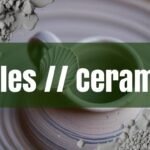Creating drainage holes in ceramic pots is a common task for gardeners and plant enthusiasts, allowing excess water to escape and preventing root rot. While it might seem daunting, drilling through ceramic can be achieved safely and effectively with the right tools, techniques, and precautions. This comprehensive guide will walk you through the process, ensuring you can confidently modify your ceramic pots to suit your plants’ needs.
Essential Tools and Safety Measures
Before you begin, gather the necessary tools. A power drill is essential, preferably a cordless model that offers better control over speed and torque. The most effective drill bits for ceramic are diamond-tipped, as they can cut through both glazed and unglazed surfaces without causing significant damage. Carbide-tipped drill bits can also be used, particularly for unglazed ceramics, but diamond bits are generally preferred for their versatility and precision. Avoid using standard drill bits designed for wood or metal, as they are not suitable for ceramic and can lead to cracking or chipping. It is often recommended to opt for smaller drill bits (1/16th carbide size) to prevent overpowering the pot. You may also want to explore pottery tools for beginners.
Safety is paramount when working with power tools and ceramic materials. Always wear safety goggles to protect your eyes from dust and potential shards. Ear protection is also advisable, especially if you’re working in an enclosed space. A properly fitted respirator or dust mask is crucial to prevent inhalation of ceramic dust, which can be harmful to your lungs. Ensure you are working in a well-ventilated area to further minimize dust exposure. To stabilize the pot and prevent slipping, place it on a non-slip surface like a foam pad or a folded towel. Remember that safety extends to your studio practices, as discussed in guides about pottery studio safety.
Step-by-Step Drilling Process
Begin by marking the spot where you want to drill the hole. Applying a piece of tape over the area can help prevent the drill bit from slipping, especially on glazed surfaces. Some people find success in starting at an angle to keep the bit from sliding all over the place. Create a pilot hole by gently pressing the drill bit onto the marked spot and starting the drill at a very low speed. Applying steady, even pressure is crucial; avoid pushing too hard, as this can cause the ceramic to crack.
Water is your best friend when drilling ceramic. Continuously spray or drip water onto the drilling site to keep the bit cool and reduce friction. Overheating can lead to thermal expansion and cracking, so maintaining consistent lubrication is essential. Drill at a slow, steady speed, allowing the drill bit to do the work. Avoid applying excessive pressure; let the bit gradually grind through the ceramic. As you approach the other side of the pot, further reduce the drill speed to prevent chipping or cracking as the bit exits. It’s important to be patient and not to rush the process.
Addressing Common Issues and Alternative Methods
One common problem is “bit walking,” where the drill bit slips and wanders from the intended spot. Starting with the drill at an angle can help with this. Creating a small indentation with a nail or awl can also provide a starting point for the bit. Chipping is another potential issue, particularly on glazed surfaces. Using a sharp, high-quality diamond drill bit and reducing pressure as you near the exit point can minimize chipping. If cracking occurs despite your best efforts, it may be due to inherent weaknesses in the ceramic or excessive pressure.
While a power drill is the most common tool for creating drainage holes, alternative methods exist for specific situations. For smaller holes, you can use sharp objects like nails, screws, or a knife. A rotary tool with a diamond cutting wheel can also be used for small, precise holes. For larger holes, specialized hole saws designed for ceramic or tile are available.
Alternative Methods for Drainage
If you’re hesitant to drill into your ceramic pots, there are alternative methods to ensure proper drainage. One option is to use a “pot-in-pot” system, where you place a plastic pot with drainage holes inside the ceramic pot. This allows you to water the plant thoroughly and remove the inner pot to drain excess water. Another approach is to add a layer of gravel or activated charcoal to the bottom of the pot. These materials can help improve drainage and prevent waterlogging, but it’s crucial to water sparingly and monitor the soil moisture carefully. Soil additives like perlite, pumice, vermiculite, orchid bark, and horticultural charcoal can also aid in aeration and water dispersion.
Drilling holes in ceramic pots can seem intimidating, but by following these steps and prioritizing safety, you can easily customize your pots for optimal plant health. Remember to use the right tools, apply gentle pressure, keep the drilling site lubricated, and take your time. With a little patience and care, you’ll be able to create drainage holes that will help your plants thrive.





